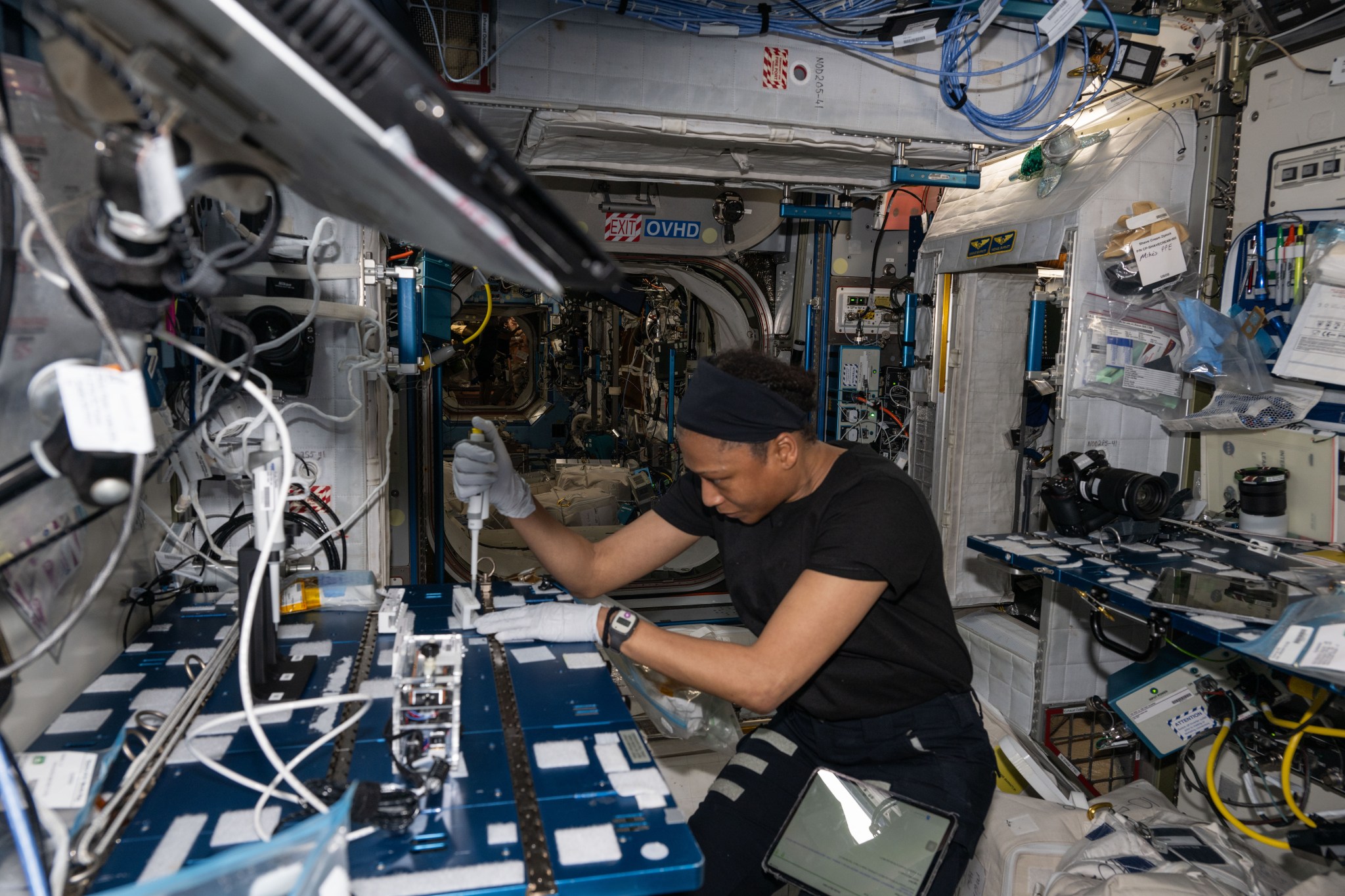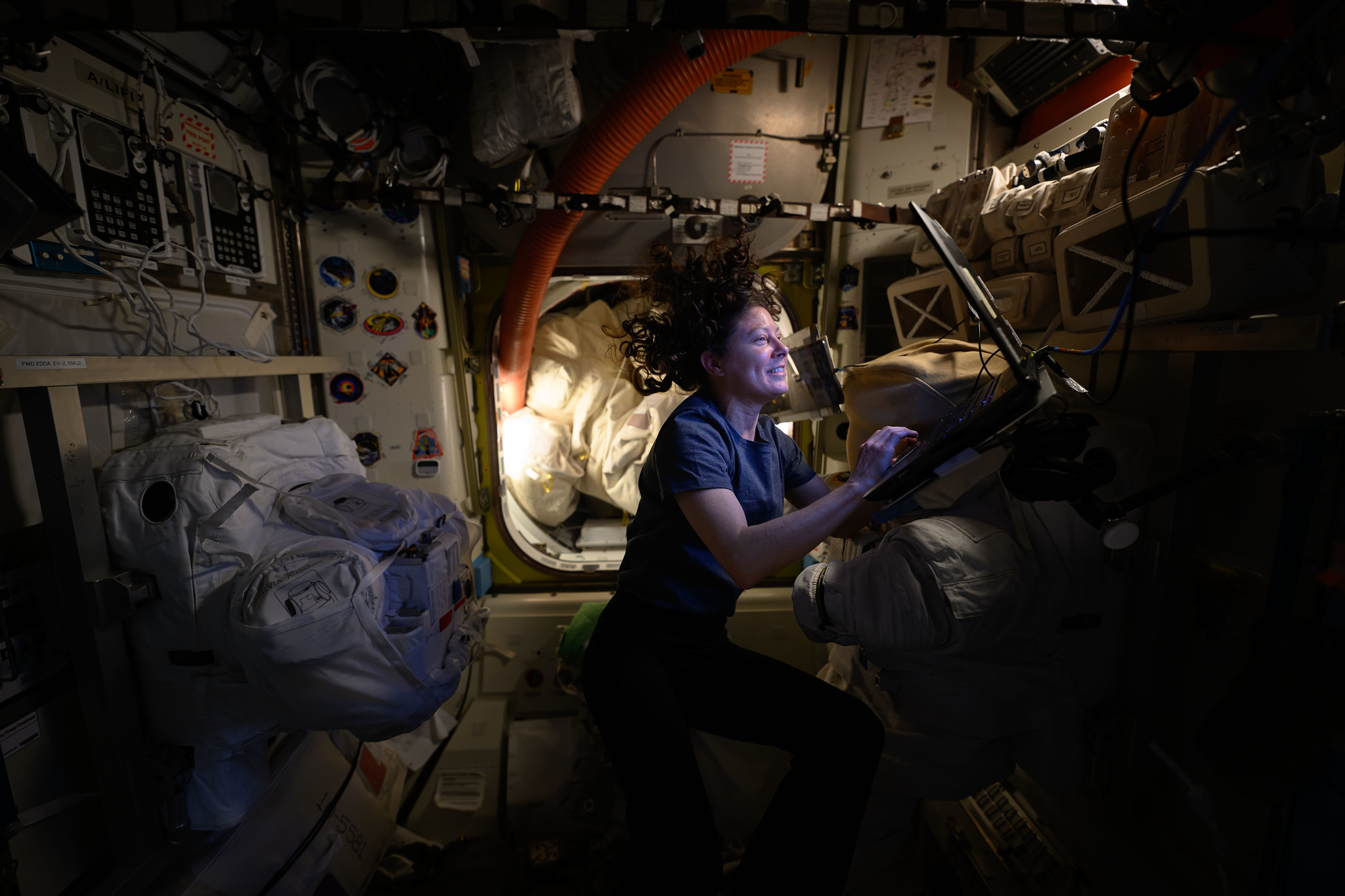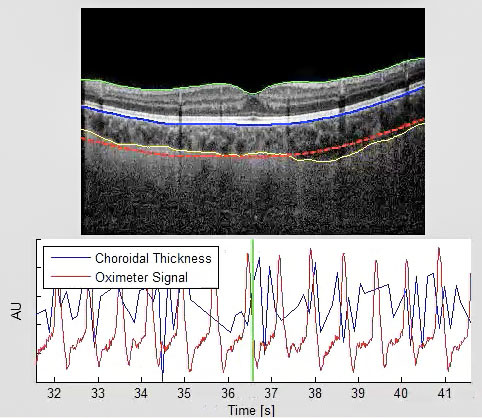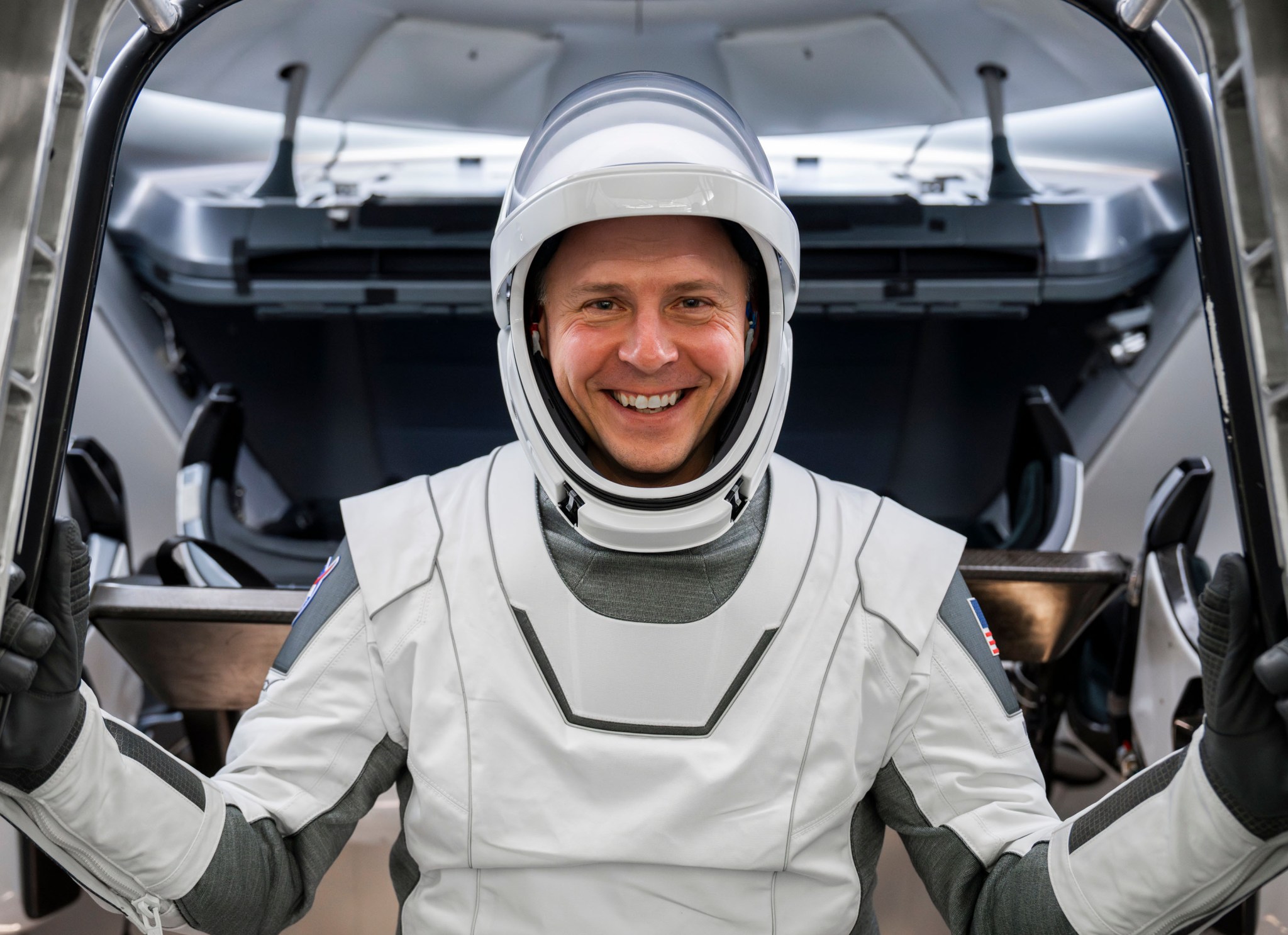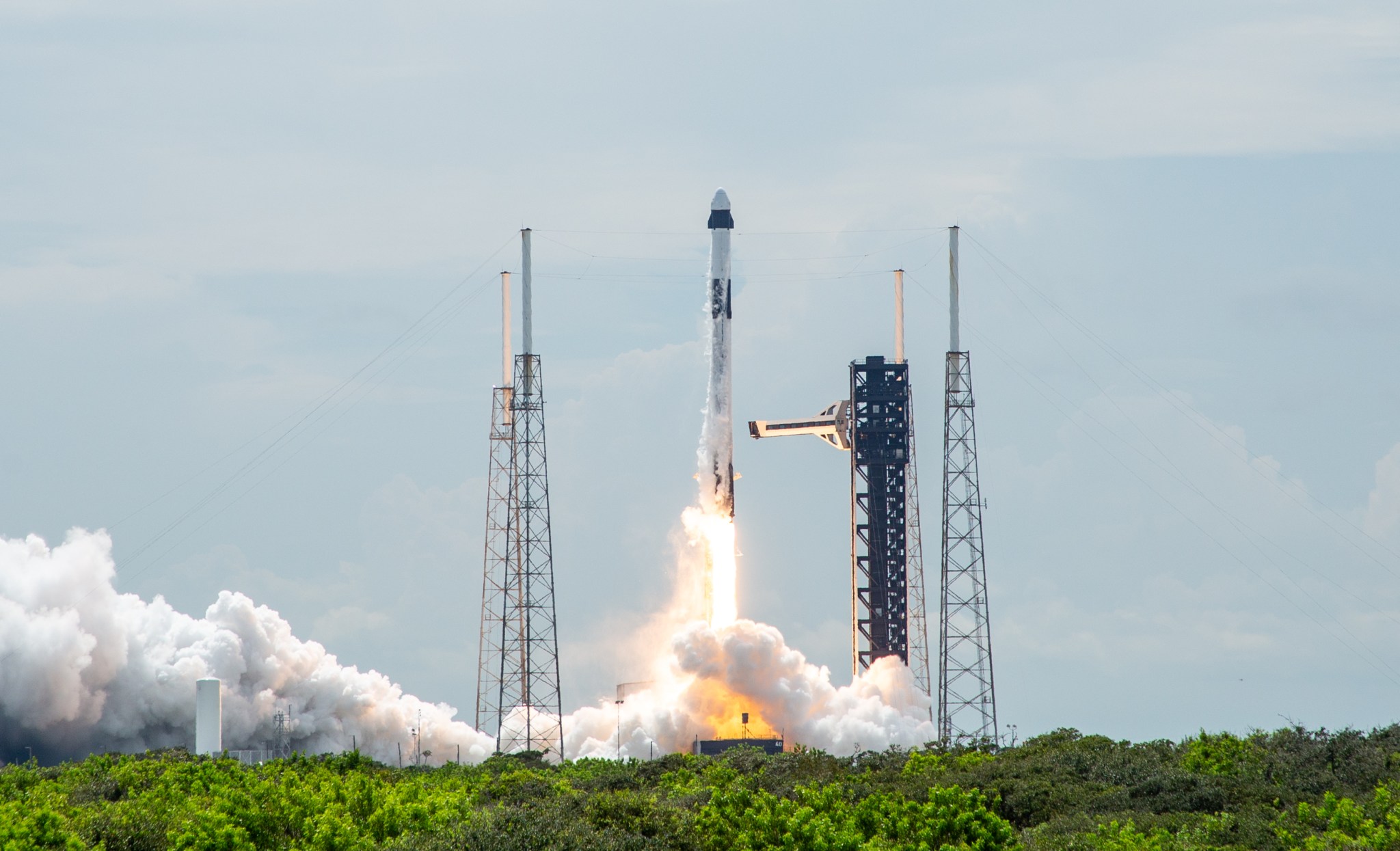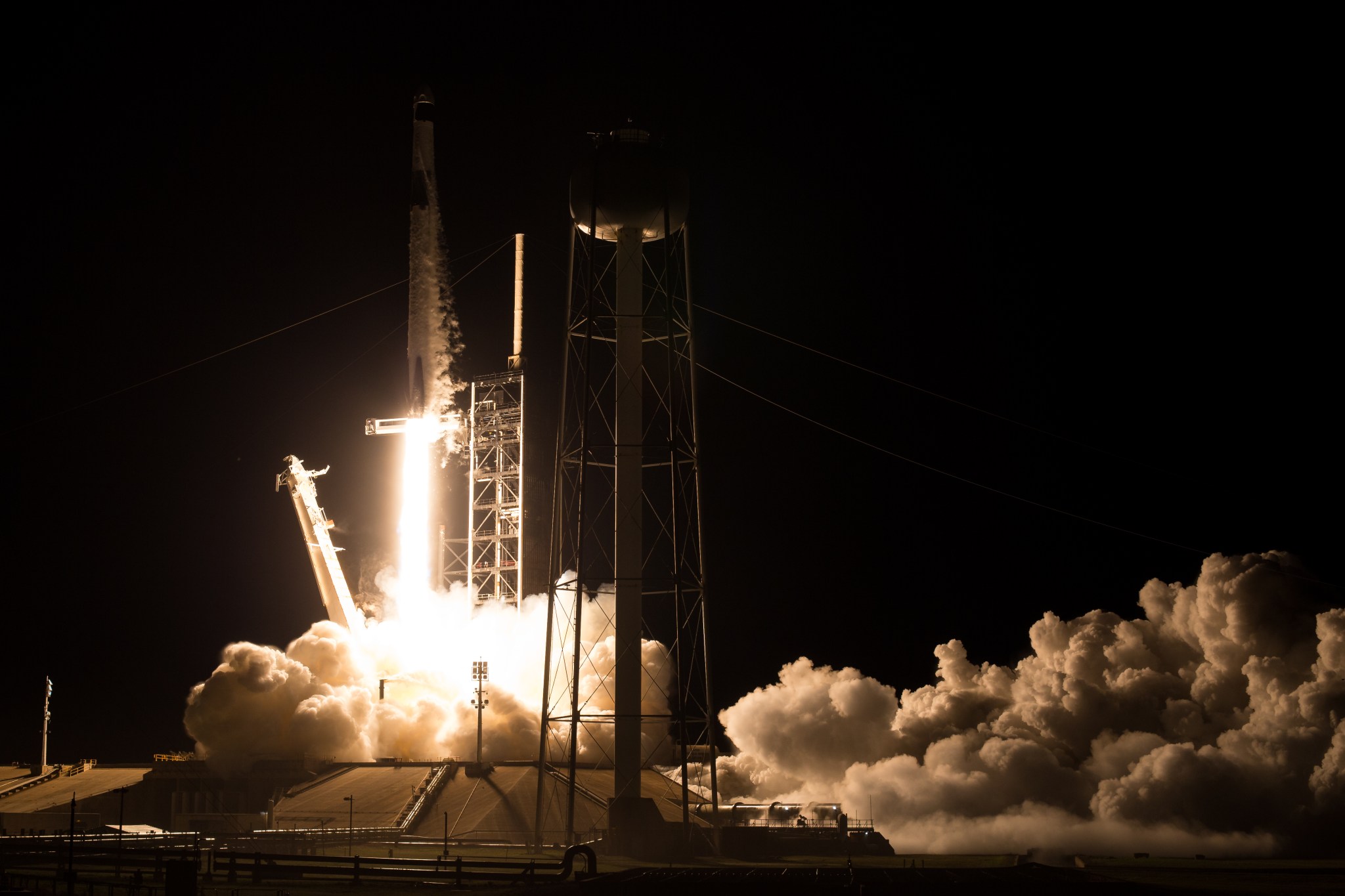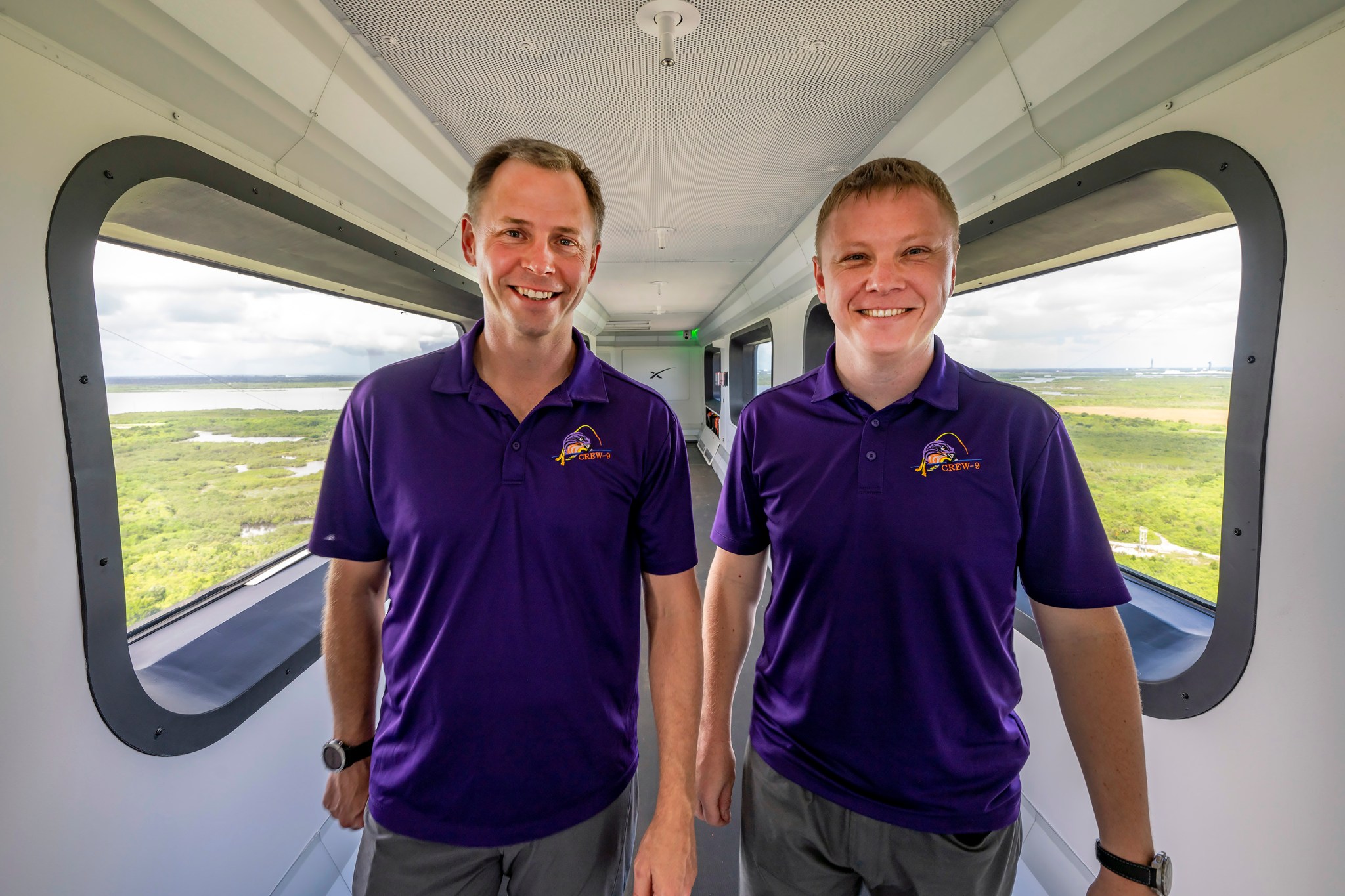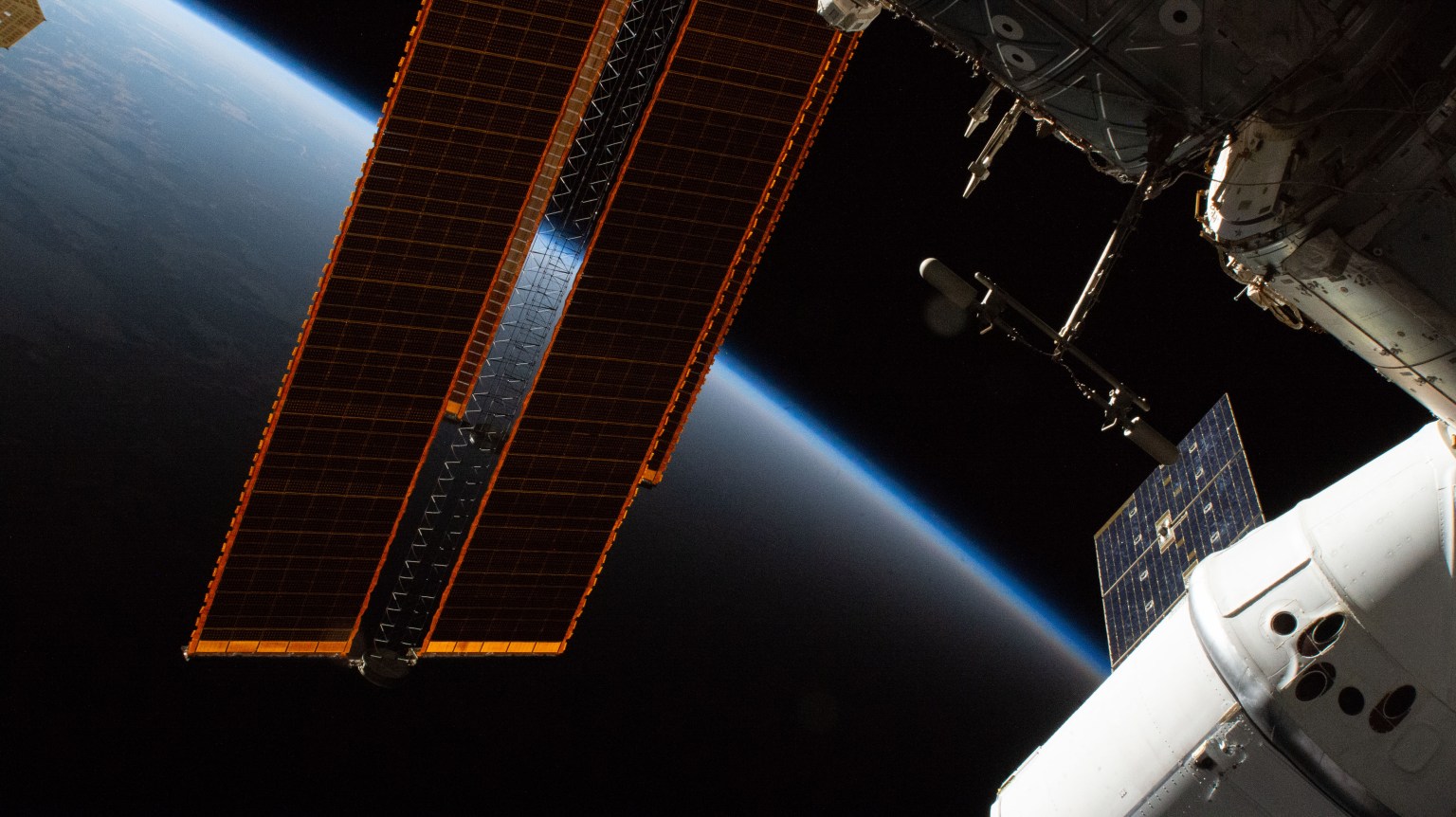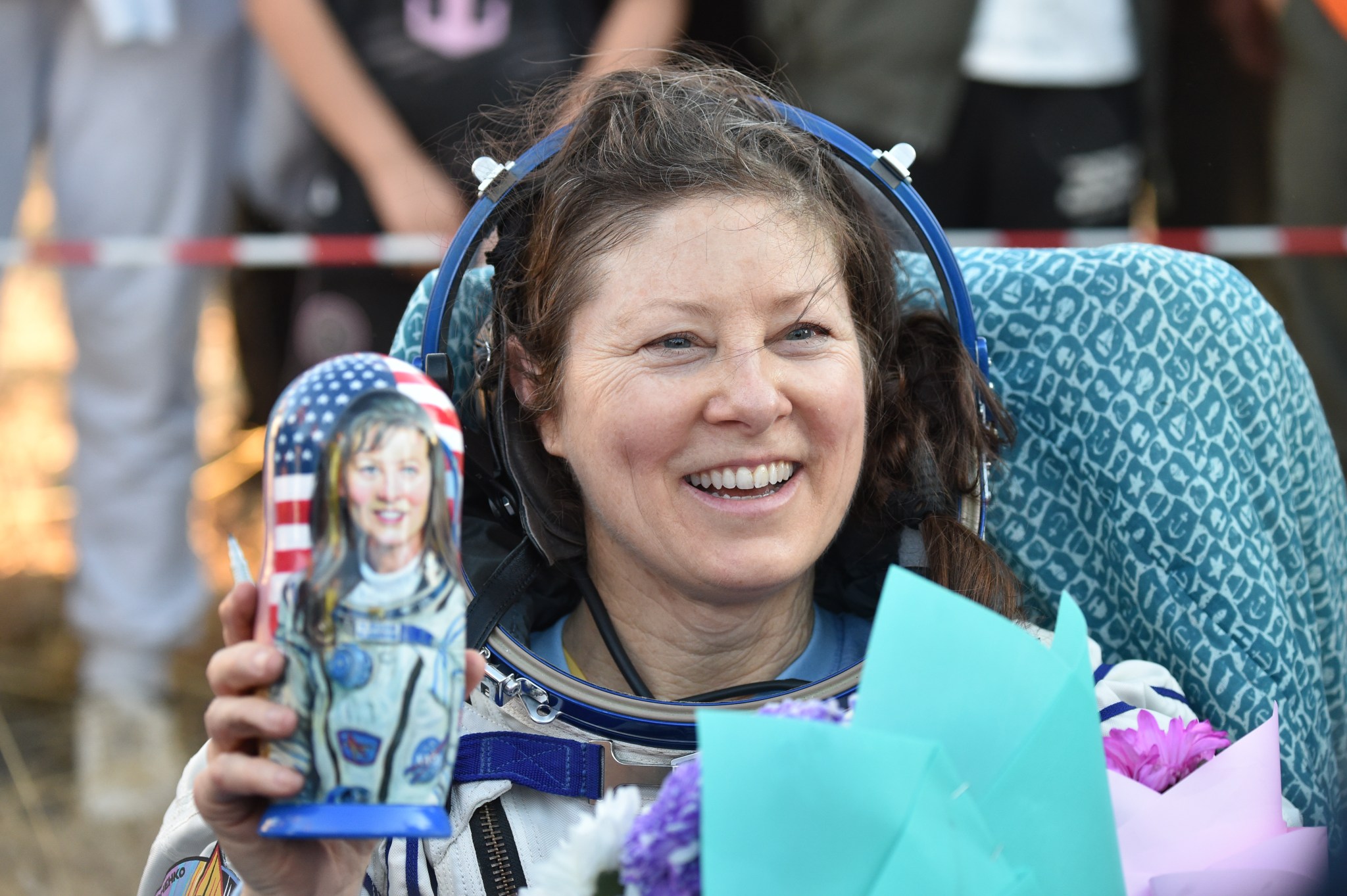6 min read Preparations for Next Moonwalk Simulations Underway (and Underwater) NASA astronauts Michael Barratt, Matthew Dominick, and Jeanette Epps and Roscosmos cosmonaut Alexander Grebenkin are returning to Earth after months aboard the International Space Station conducting scientific experiments and technology demonstrations for the agency’s SpaceX Crew-8 mission. The four launched on March 3 aboard a SpaceX Dragon spacecraft from NASA’s Kennedy Space Center in Florida. Here’s a look at some scientific milestones accomplished during their mission: Revealing resistant microorganisms NASA astronaut Jeanette Epps extracts DNA for the Genomic Enumeration…
Read MoreTag: International Space Station (ISS)
NASA Astronaut Tracy C. Dyson to Discuss Science, Station Mission
NASA astronaut Tracy C. Dyson works on a computer inside the International Space Station. Credit: NASA NASA astronaut Tracy C. Dyson will share details of her recent six-month mission aboard the International Space Station in a news conference at 11 a.m. EDT Friday, Oct. 4, at the agency’s Johnson Space Center in Houston. The news conference will air live on NASA+ and the agency’s website. Learn how to stream NASA content through a variety of platforms, including social media. Media interested in participating in person must contact the NASA Johnson newsroom no…
Read MoreStation Science Top News: Sept. 27, 2024
Researchers found that long-duration spaceflight affected the mechanical properties of eye tissues, including reducing the stiffness of tissue around the eyeball. A better understanding of these changes could help researchers prevent, diagnose, and treat the vision impairment often seen in crew members. SANSORI, a Canadian Space Agency investigation, examined whether reduced stiffness of eye tissue contributes to vision impairment in astronauts on long-term missions. This condition, known as Spaceflight Associated Neuro-Ocular Syndrome, or SANS, includes a range of physical changes to the eyes. This paper suggests that biomechanical changes in the eye…
Read MoreNASA Astronaut Nick Hague Boosts Human Health Research in Space
NASA’s SpaceX Crew-9 commander Nick Hague is pictured in his flight suit during training at SpaceX headquarters in Hawthorne, California. Hague will perform human health and performance research on the International Space Station as part of his mission. SpaceX NASA astronaut Nick Hague and Roscosmos cosmonaut Aleksandr Gorbunov will soon dock with the International Space Station as part of the agency’s SpaceX Crew-9 mission, a venture which will enhance scientific research and bolster the knowledge about how people can live and work in space. During the planned five-month mission, Hague’s…
Read MoreLiftoff! NASA’s SpaceX Crew-9 Launches to International Space Station
A SpaceX Falcon 9 rocket carrying the company’s Dragon spacecraft is launched on NASA’s SpaceX Crew-9 mission to the International Space Station with NASA astronaut Nick Hague and Roscosmos cosmonaut Aleksandr Gorbunov onboard, Saturday, Sept. 28, 2024, from Cape Canaveral Space Force Station in Florida. NASA’s SpaceX Crew-9 mission is the ninth crew rotation mission of the SpaceX Dragon spacecraft and Falcon 9 rocket to the International Space Station as part of the agency’s Commercial Crew Program. Hague and Gorbunov launched at 1:17 p.m. EDT from Space Launch Complex 40…
Read MoreNASA Invites Public to Join as Virtual Guests for SpaceX Crew-9 Launch
A SpaceX Falcon 9 rocket carrying the company’s Dragon spacecraft is launched on NASA’s SpaceX Crew-8 mission to the International Space Station with NASA astronauts Matthew Dominick, Michael Barratt, and Jeanette Epps, and Roscosmos cosmonaut Alexander Grebenkin onboard, Sunday, March 3, 2024, at NASA’s Kennedy Space Center in Florida. NASA/Aubrey Gemignani NASA invites the public to participate as virtual guests in the launch of the agency’s SpaceX Crew-9 mission. NASA astronaut Nick Hague, commander, and Roscosmos cosmonaut Aleksandr Gorbunov, mission specialist, will embark on a flight aboard a SpaceX Dragon…
Read MoreNASA Sets Coverage for Agency’s SpaceX Crew-9 Launch, Docking
NASA astronaut Nick Hague and Roscosmos cosmonaut Aleksandr Gorbunov walk across the crew access arm at Space Launch Complex-40 at Cape Canaveral Space Force Station in Florida. Credit: SpaceX NASA will provide coverage of the upcoming prelaunch and launch activities for the agency’s SpaceX Crew-9 mission to the International Space Station. Liftoff is targeted for 1:17 p.m. EDT, Saturday, Sept. 28, from Space Launch Complex-40 at Cape Canaveral Space Force Station in Florida. This is the first human spaceflight mission to launch from that pad. The targeted docking time is…
Read MoreEducational Activities in Space
4 Min Read Educational Activities in Space The SpaceX Dragon resupply ship (at right) and a pair of the International Space Station's main solar arrays foreshadow a trek into an orbital sunset. Credits: NASA Science in Space: September 2024 As students of all ages returned to school this month, crew members on the International Space Station continue to conduct a variety of educational programs and activities that support learning on the ground. These efforts are part of a wider commitment at NASA to engage, inspire, and attract future generations of…
Read MoreExpedition 71 Soyuz Landing
NASA astronaut Tracy C. Dyson is seen smiling and holding a gifted matryoshka doll outside the Soyuz MS-25 spacecraft after she landed with Roscosmos cosmonauts Oleg Kononenko and Nikolai Chub, in a remote area near the town of Zhezkazgan, Kazakhstan on Monday, Sept. 23, 2024. Dyson is returning to Earth after logging 184 days in space as a member of Expeditions 70-71 aboard the International Space Station and Chub and Kononenko return after having spent the last 374 days in space. Photo Credit: (NASA/GCTC/Pavel Shvets)
Read MoreStation Science Top News: September 20, 2024
Researchers found that eddies, or swirling wind patterns, increased moisture evaporation in an alfalfa field. A better understanding of the complex exchange of water and heat between the ground and atmosphere could improve remote sensing products and their use in agricultural water management. The station’s ECOSTRESS instrument takes high-resolution thermal infrared measurements of Earth’s surface that provide data on changes in water availability, vegetation water stress, and agricultural water use. Researchers use observations from the USGS Landsat 8 and 9 satellites and ECOSTRESS to validate climate models and update data…
Read More